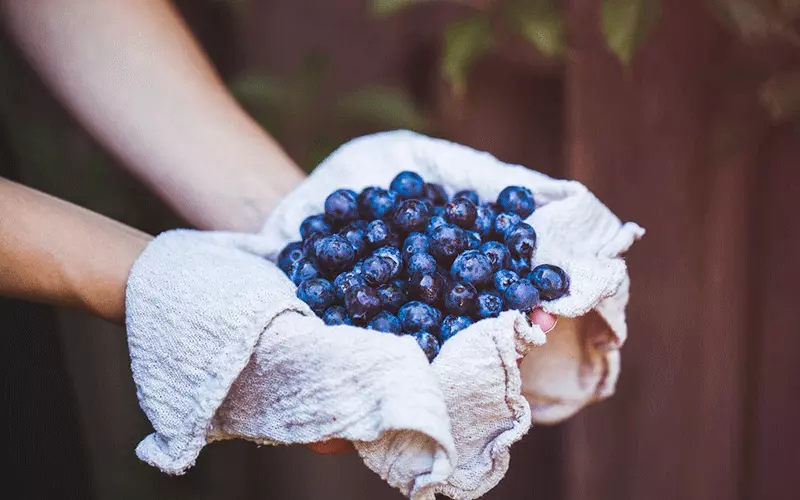It is vital to ensure the quality of small fruits by harvesting them at the correct maturity stage and storing them appropriately. For a limited time, you can refrigerate small amounts of fresh fruit. Any leftover fruit is recommended to be canned or frozen. For example, It is important to identify the right time for berry fruit harvesting. Here is a guide:
- The size and color
Observing your berries can simply tell you when to harvest them. They are usually ready to pick once the color turns from green to a more vibrant color. The final color depends on the type of berry you are growing. It may go red or purple. In addition to their color, their size can tell you whether their harvest time has come or not.
- The taste and smell
The ripeness of berries is also indicated by a sweet, ripe scent. You can tell when your berries are ripe by their sweet aroma – so get close and sniff them! If you want to pick the best berries, you should taste at least one or two berries before you do.
- The right time for harvesting
The next step, after noticing that your berries are ripened and ready for harvest, is to harvest them at the right time in the day. Picking berries in the morning is the best time, due to the sun’s rays hitting them first. Berry sweetness is also at its peak when picking early in the morning.

Being familiar with the local environment
Foragers are likely to find plants that are edible in areas with plenty of trees and weeds, as well as in at least one sunny area of an old farm. When you learn about the local ecosystem, you’ll become more adept at identifying not only edible plants but their likely companions as well. Your field experience can be impacted significantly by your familiarity with local animals and insects.
By learning more about the local ecosystem, you not only gain a greater appreciation for the outdoors and foraging experience, but you also become closer and engaged with the outdoors. Although it is a perfect experience and makes you feel like investigating but private property or protected lands are not suitable for foraging.
The ways of berry fruit harvesting
Berry fruits easily get hurt and accept damages. For this reason, it is highly recommended to harvest, stored, graded, and packed by hands. The postharvest keeping quality is dictated by the ripeness of the fruit at the harvest and how it is handled afterward. Shelf-life, sales probability, and storage behavior are affected by the ripeness of the berry fruit harvest. Although immature fruits are likely to have a longer storage capability, they may not develop the desired organoleptic characteristics, while over-mature fruit typically decays very quickly as its susceptibility increases.

How long will it take for the berry plant to fruit?
No matter what your goals are for your gardening or landscaping berry fruits, growing your own berries is an all-around rewarding endeavor. It is better to be prepared and plan ahead due to the fact that berry fruits fruit soon and the time of berry fruit harvesting comes before you are expecting. Most berry fruits fruit in the first or second year, but there are some like gooseberries and grapevines that take three to four years until fruiting.
How to pick berry fruits
Plastic clamshell containers containing 250 g of fruit are the most popular containers for raspberries and blackberries at the supermarket. Depending on the size of the strawberries, containers can also store 500, 1000, or even 2000 grams of this fruit. Other containers are made from wood and pulp, but they stain easily and are more expensive. However, whatever the material, packaging should be wide and shallow instead of deep, and there should be no more than three layers of fruit in each box, as the fruit at the bottom might be crushed by the fruit on top.
